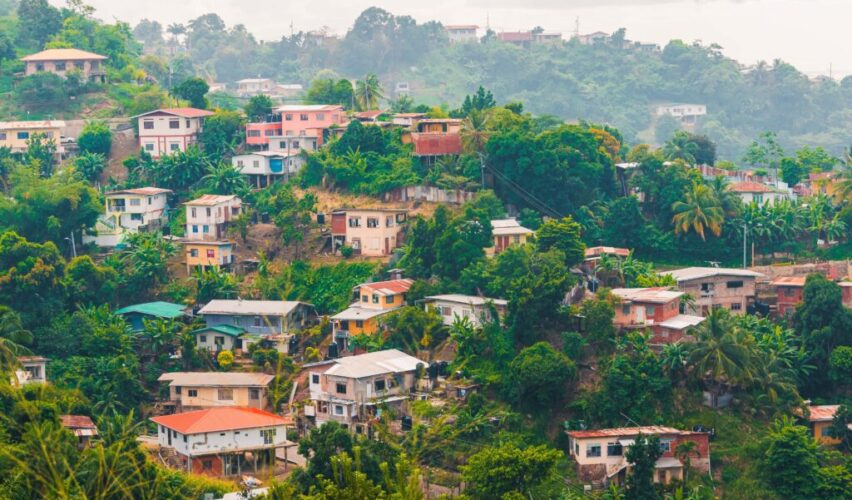Can we understand urbanism from the perspective of thermodynamics? As part of our research on how data can help improve the discipline of urban design, we are developing a thermodynamic approach to how cities grow and are built. The reason for this approach, typical of an experimental science such as physics, has to do with the idea that it is very likely that urban planning, as an activity that occurs in our Universe, cannot escape the rules that govern the rest of things that exist in it.
If this is so, we should be able to describe the formation of cities, like the formation of continents, planets, or galaxies, in terms of certain forces. And these forces must be measurable. Therefore, the idea of an urban design that uses data as raw material is consistent with the identification of the forces that operate in the formation of the structures that make up that highly ordered set of atoms that we call The City.
Regarding the laws that govern the Universe, there is probably one that stands out: the Second Law of Thermodynamics, which sets the arrow of time and sends us inexorably to chaos. As the great cosmologist Sir Arthur Eddington once stated: “If your theory doesn’t agree with the observations, they are probably wrong, but if your theory doesn’t agree with the Second Law of Thermodynamics, you’re in serious trouble.”
The whole is (for now) more than the sum of its parts
Schrödinger, in his famous essay “What Is Life?”, anticipated the discovery of DNA, speculating that genes must propagate through a particular type of molecular structures of a crystalline nature. He pointed out that life depended on order, and that this could only be achieved with a large number of atoms. He also predicted that the carrier of genetic information would be a “small, permanent in time” molecule. To conclude, he established that, as much as biology could explain life better than physics, it must strictly follow the laws of physics. It’s just that many of these laws, encompassed under the nascent discipline of biophysics, were unknown in 1940 and, to a large extent, remain unknown today.
Schrödinger’s approximation pertains to scientific reductionism, which postulates that the whole is the sum of the parts. The fact that this is clearly not the case does not totally invalidate this approach. The more we know about molecules, the better we understand enzymes, and the better we understand enzymes, the deeper our understanding of cells. And cell biology is important for the development of neurology, which in turn feeds into psychiatry.
Therefore, in the same way that it does not make much practical sense to try to unravel the mental problems of a patient through the quantum equations that govern the atoms of his brain, it is also true that the reductionist approach contributes to perfecting our knowledge in a variety of fields.
The Hand That Rocks the Cradle
Let us observe how the built space is the product of the flows that converge in it, and let us think about how the intensity of these flows and the intensity of the architecture they produce are intimately related. Where more capital flows, the higher the skyscrapers. Where more goods are exchanged, civil engineering builds larger ports or logistics complexes. A pattern that is also true in the digital world: the most important data exchange nodes or data centers occupy enormous surfaces.
That matter is reorganized in structures of proportional size to the energetic contribution is not something typical of cities. It occurs in practically any natural ecosystem and is also one of the properties of life. The novelty is that in cities matter uses human beings as a source of work necessary for this great restructuring (on a planetary scale) that we call urbanity.
Studies that seek to understand urban planning as a product of the city’s energy and material flows are not new. Urbanism has been studying the relationship between the built space and the energy contributions that reach the city for some time. A phenomenon that, starting in the 1990s, has also been studied from urban sociology: Castells generically calls urban exchange spaces “the space of flows”. From Geography, theories under the prism of “Space Syntax” (spatial syntax) study what formal patterns places present as a product of interactions between flows, and how, reciprocally, the design of places influences social and economic flows.
In this series of articles on how to explain urbanism from thermodynamic principles we are adoptingt a complementary perspective: we can try to understand the city as one more example of a phenomenon, that of the re-organization of matter in response to energy flows, which seems to be consubstantial with the nature of our universe.
Dissipative adaptation
The Nobel Prize in Chemistry Ilya Prigogine coined the term dissipative structure to describe coherent and self-organized structures in systems far from thermodynamic equilibrium, a type of physical system that involves energy exchange and, therefore, can only be understood from the relationship with its environment.
In this type of structure, the irreversible path towards disorder that marks the Second Law of Thermodynamics stops, and even reverses. And that happens precisely due to the energy exchange, which, under certain conditions, is capable of contributing to the ordering of the system.
This type of structure does not form spontaneously, but depends on how the matter in the system and the energy that affects it interact with each other. The cyclical contribution of energy can, in certain situations, create this type of stable configurations that conclude in a stationary equilibrium. This process is known as dissipative adaptation. From this point of view, we think that urbanism and thermodynamics are also related through this type of dissipative adaptation process, as we will see later.
Of dunes, sunflowers and ditches
When we think about adaptation, living organisms quickly come to mind. But not only living matter adapts to the energy of the environment. Dunes, for example, are the result of the adaptation of inert matter to the cyclic supply of energy from the wind. In them we discover a type of organized configuration of matter. Plants also represent a state of high material organization that is the result of the cyclic energy input from the sun and the surrounding energy stored in the soil in the form of nutrients. At an even more macroscopic level, Nile Basin civilizations organized themselves at a social and territorial level to adapt to the river’s flood cycle, giving rise to an intricate network of irrigation and farming structures.
Dunes, sunflowers, and ancient agrarian settlements are examples of bottom-up self-organization, all in response to a cyclical flow of energy. In them, the structure and configuration of matter adapts to incoming energy flow and is a function of both its frequency and its intensity. Thus, the position, orientation and distance between dunes depend on the strength, direction and intervals with which the prevailing winds blow. Sunflowers orient themselves in the direction of the sun. And Nile populations organize their crops and canals according to the past and expected magnitude and frequency of floods.
The search for stationary equilibrium
So, under certain conditions, matter can adapt to the energy flows of the environment in changing structures (alive or not) but stable. To do this, the energy supply must be cyclical and of a moderate intensity. If an ear of wheat receives all the solar energy of spring concentrated in one minute, the result will be a scorched grass. And if the sun didn’t set every night to rise again on the next day, the plant would soon die of stress. In the same way, a cyclical and moderate flow of migrants can be used by a society to reconstitute itself and prosper, while a migratory avalanche will cause great tensions and fractures, weakening its political structures.
If, as we have seen, the structure of natural ecosystems, organisms, and social organizations is formed and grows thanks to the (moderate and cyclical) energy flows that affect them, it does not seem unreasonable to think that in cities, social ecosystems formed by all kinds of organisms (including people), urbanism and thermodynamics are related through similar phenomena.
We continue dealing with the subject of thermodynamics and urbanism, this time stopping at entropy, in the next post.
This article is published under a Creative Commons license. Some rights reserved.
Photo by Kenrick Baksh via Unsplash











